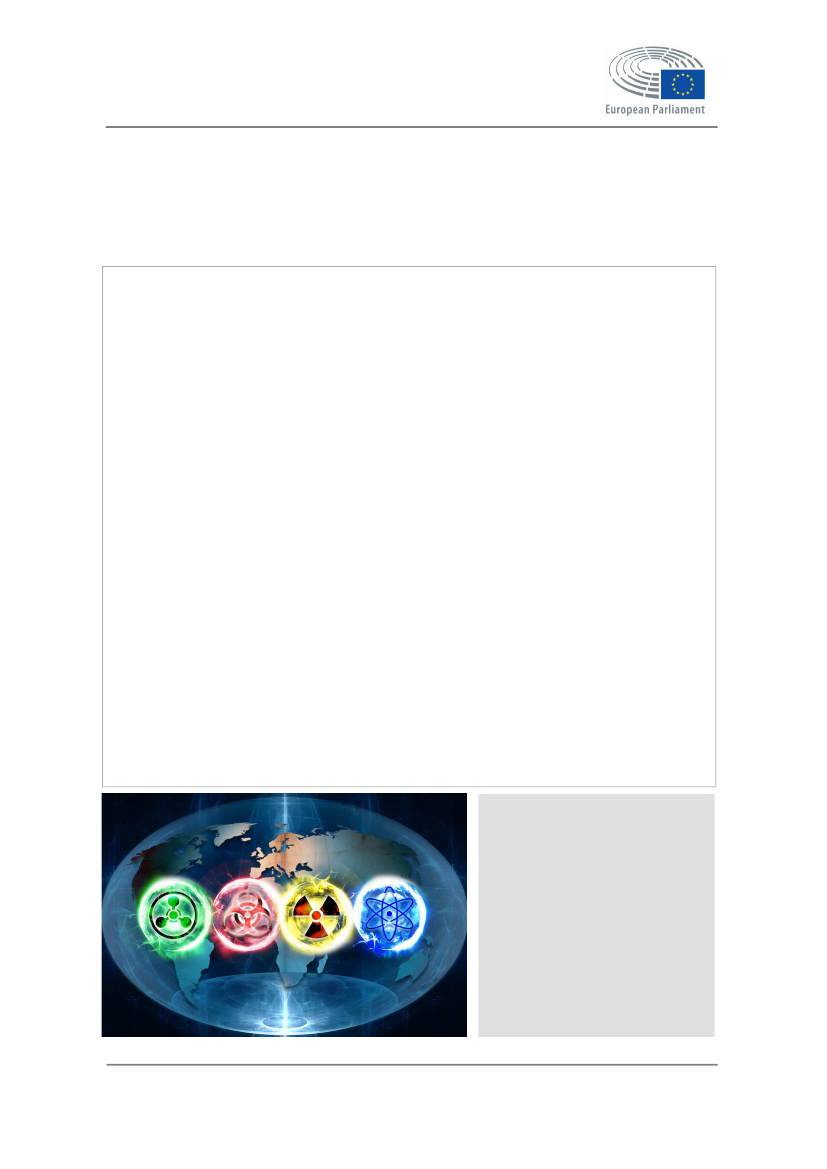
Briefing
December 2015
ISIL/Da'esh and 'non-conventional'
weapons of terror
SUMMARY
The European Union and its Member States must prepare for the possibility of a
chemical or biological attack on their territory by the self-styled 'Islamic State' in Iraq
and the Levant (known variously as IS, ISIS or ISIL, and by the Arabic acronym 'Da'esh').
Since the beginning of October 2015, terrorist attacks in Ankara, the Sinai Peninsula,
Beirut, Paris and Tunis, for which ISIL/Da'esh has claimed responsibility, have cost the
lives of 500 people. Immediately following the latest attack in Paris, the jihadist
terrorist group threatened further attacks in European cities.
ISIL/Da'esh has vowed that future strikes will be more lethal and even more shocking.
This has prompted experts to warn that the group may be planning to try to use
internationally banned weapons of mass destruction in future attacks. On
19 November 2015, the French Prime Minister, Manuel Valls, raised the spectre of
ISIL/Da'esh planning a chemical or biological attack. At present, European citizens are
not seriously contemplating the possibility that extremist groups might use chemical,
biological, radiological or nuclear (CBRN) materials during attacks in Europe. Under
these circumstances, the impact of such an attack, should it occur, would be even
more destabilising.
European governments and EU institutions need to be on alert, and should consider
publicly addressing the possibility of a terrorist attack using chemical, biological,
radiological or even nuclear materials. The EU institutions have devoted considerable
efforts to preventing a CBRN attack on European soil and preparing worst-case
scenarios. However, some gaps remain, in particular with regard to information-
sharing among Member States.
In this briefing:
The ISIL/Da'esh threat
The likelihood of future attacks
Non-conventional weapons
ISIL/Da'esh motivation
Threat scenarios and
ISIL/Da'esh s capacity
The situation at the EU level
The role of EU Member States
Outlook
Main references
EPRS | European Parliamentary Research Service
Author: Beatrix Immenkamp
Members' Research Service
PE 572.806
EN